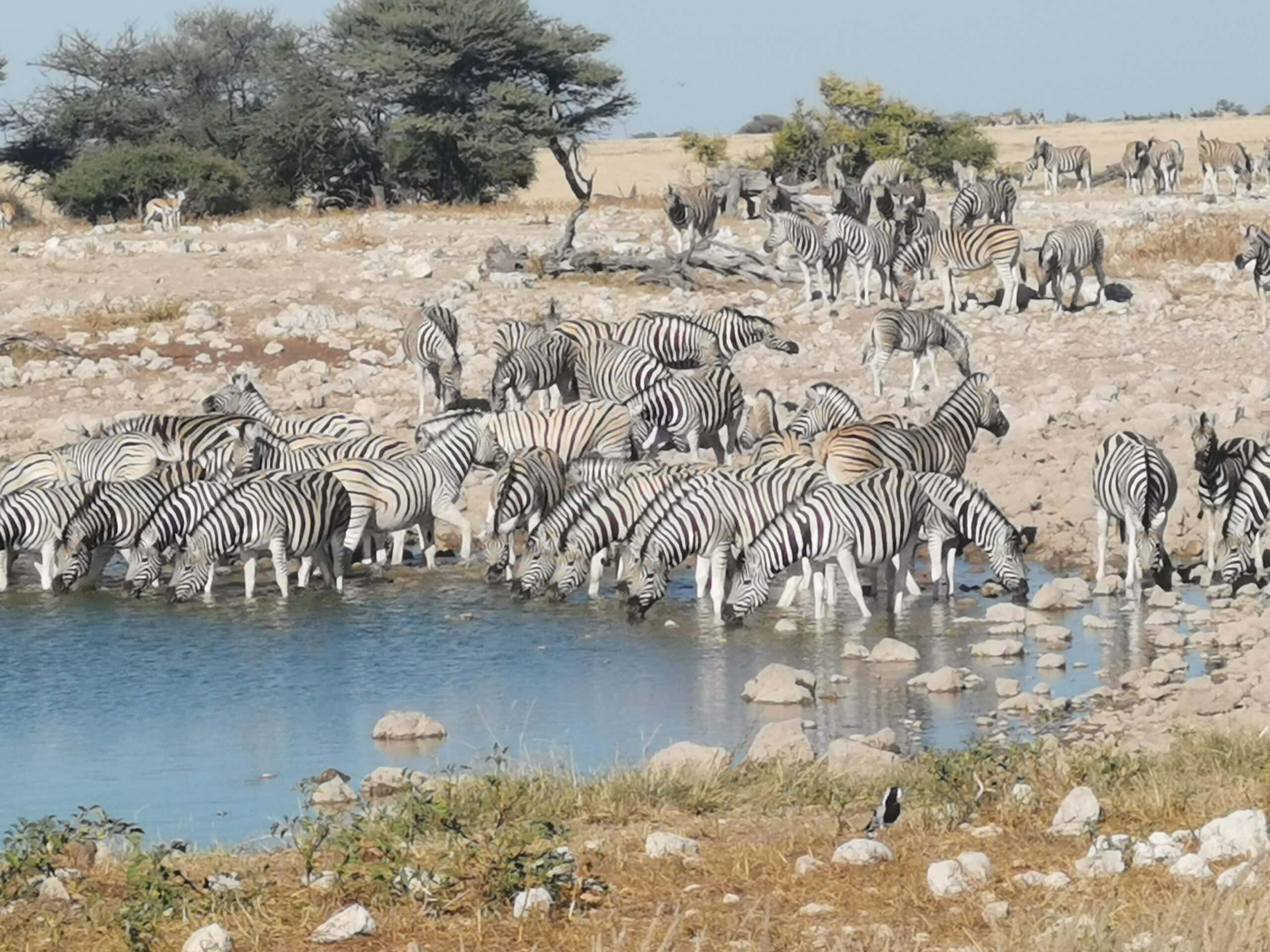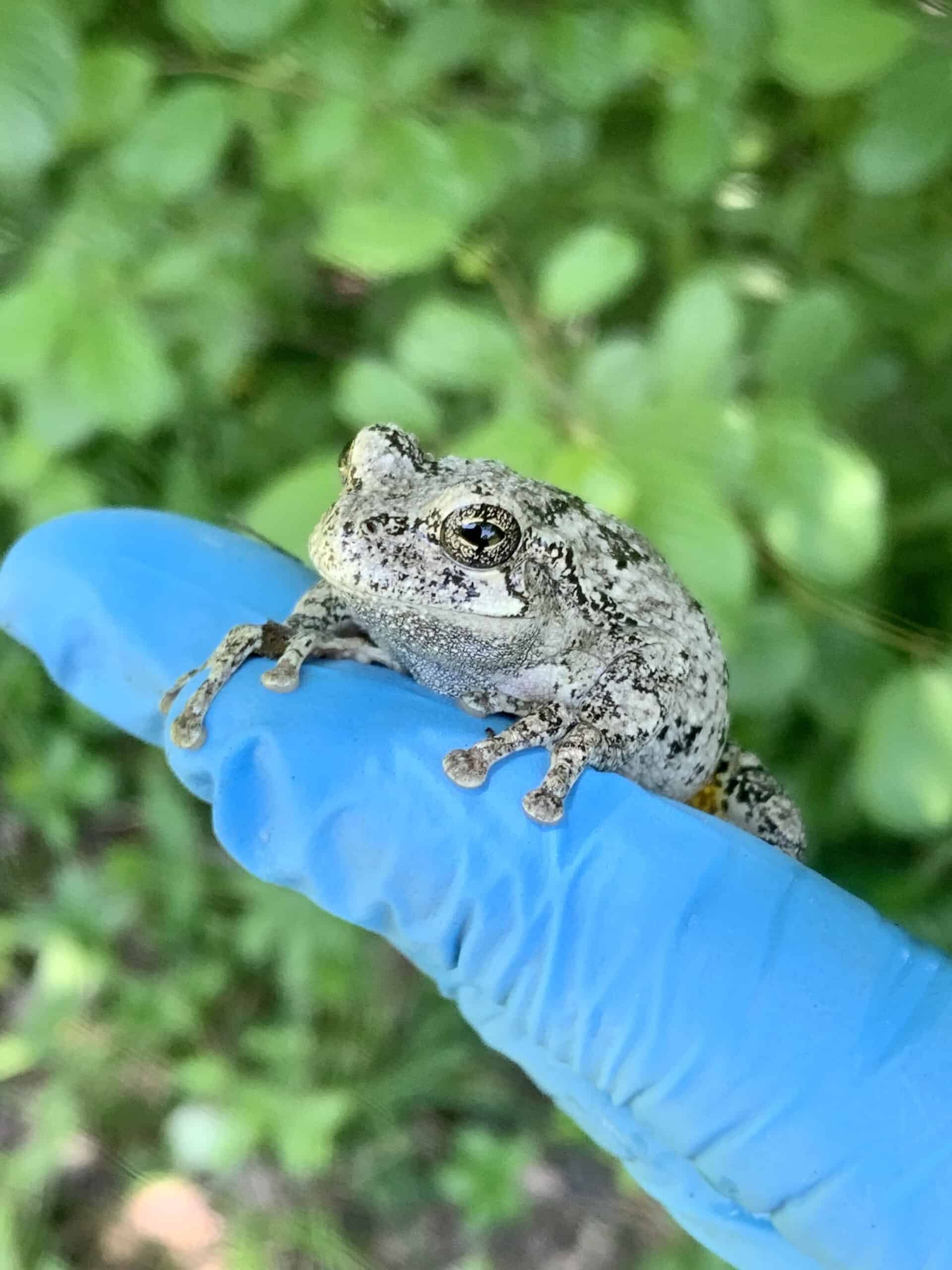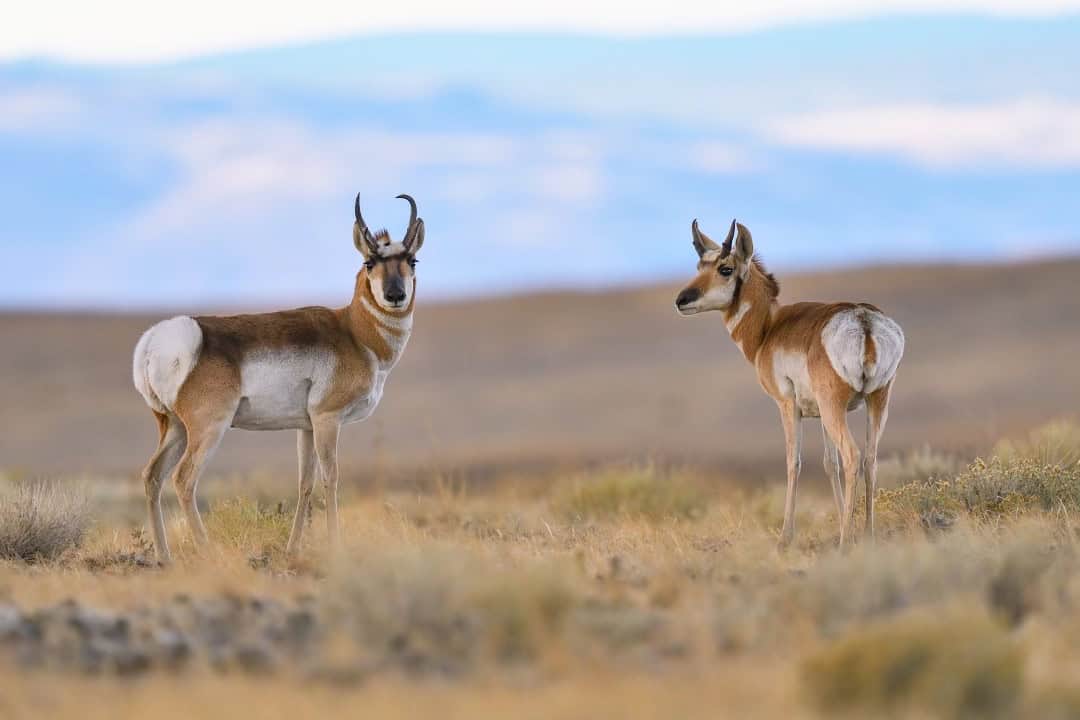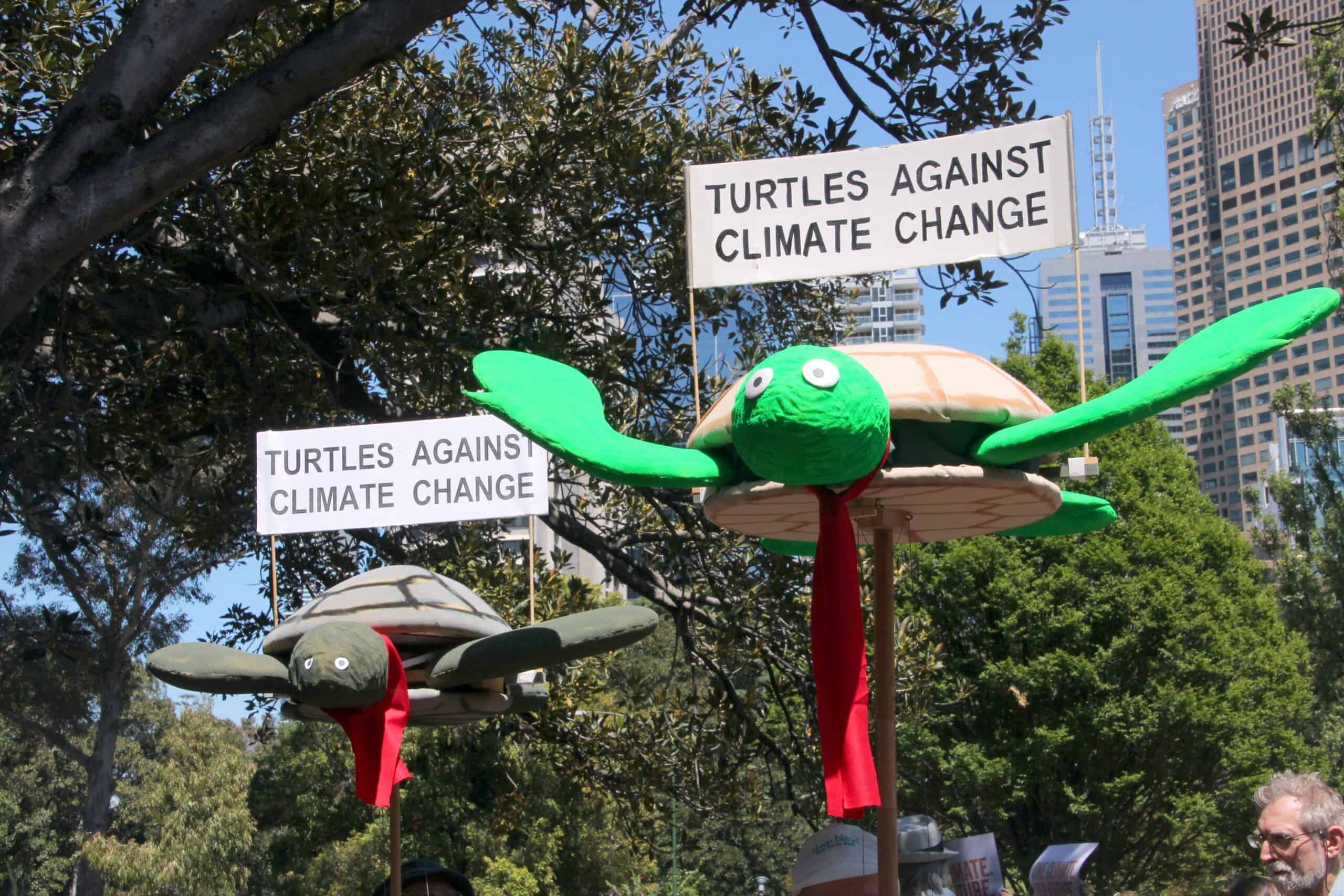Share this article
Wildlife Featured in this article
- Plains zebra
- Blue wildebeest
TWS2023: How do zebras and wildebeests respond to drought?
Researcher tracked ungulates in a Namibian national park for several years
Drought in southwestern Africa can push wildebeests and zebras to the limits of their tolerance—in some cases killing them.
New research shows how migration obstacles may limit these ungulates’ abilities to respond naturally to prolonged dry periods, despite wildlife managers providing artificial water resources.
“A lot of them are going to make it, but a lot of them are not,” said TWS member Kimberlie Vera, a PhD candidate in forest and wildlife ecology at the University of Wisconsin, Madison. “Some of them are going to succumb to drought-caused starvation.”
As part of her dissertation, detailed on a poster at The Wildlife Society’s 2023 Annual Conference in Louisville, Kentucky, Vera traveled to Etosha National Park in northern Namibia in 2019, toward the end of a two-year drought. In normal conditions, the weather there is divided into three seasons—cold and dry, hot and dry and hot and wet. The trouble was, the previous two years didn’t see much wet in the period from January to March, when the rains usually occur.
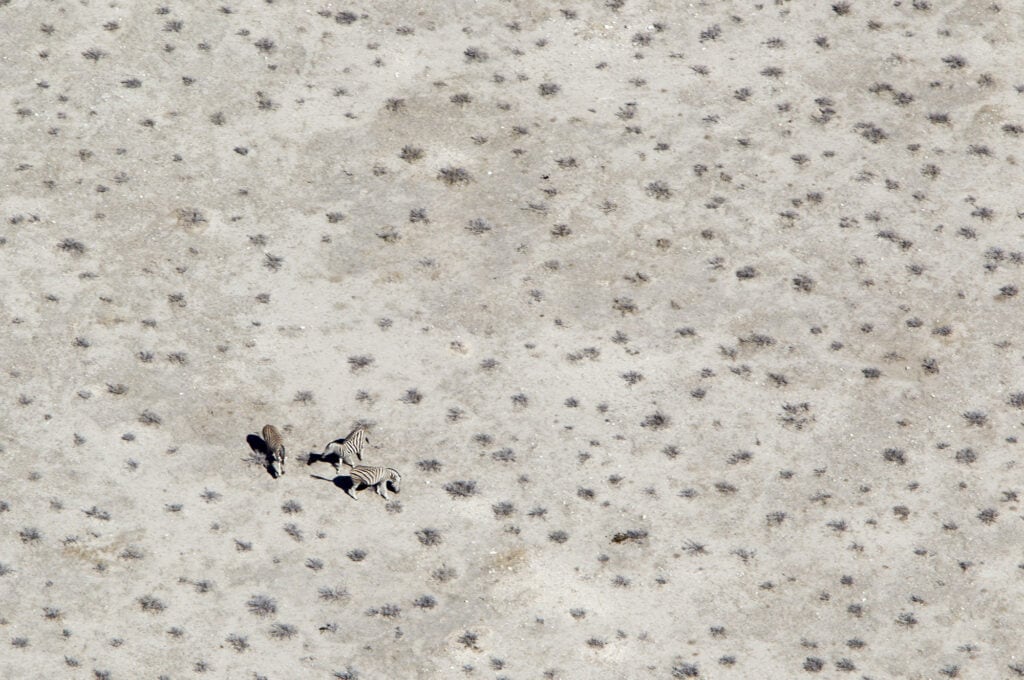
Adventure in the field
To test how the drought was affecting ungulates, Vera and her colleagues drove their truck across dusty landscapes to place GPS tracking collars on blue wildebeests (Connochaetes taurinus) and plains zebra (Equus quagga). Including work done before she arrived, 27 wildebeests were collared and 22 zebras. “It takes a lot of patience—you could be out all day without seeing anything,” Vera said.
Then suddenly, the team burst into action when they spotted zebras or wildebeests. “It goes from zero to 100,” she said. They had gotten organized beforehand, practicing exactly what to do. Once they tranquilized an animal using dart guns, they would have to be as efficient as possible, getting the collars onto the animals and taking other measurements. They also surgically implanted biologger devices that tracked the internal temperature of the abdomens of six wildebeests and six zebras.
“It gave me goosebumps,” Vera said. “It’s not until you’re right next to them until you realize how big they are and worthy of your respect.”
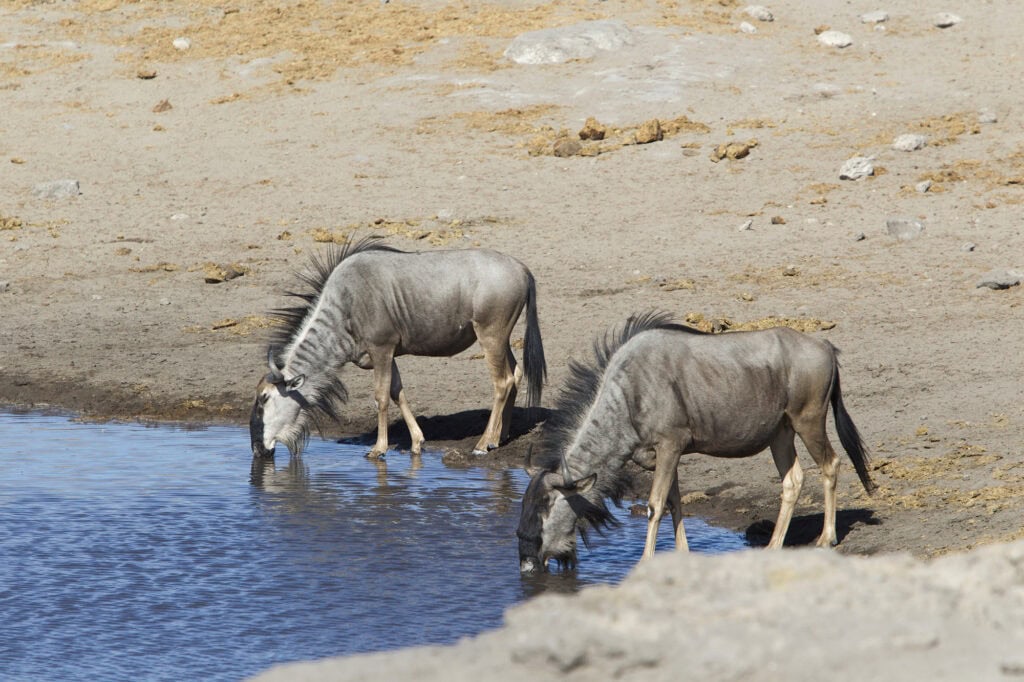
Grim results
Collar data showed that the end of the drought, during the hot-dry period, was the worst time for these two species. Some 27% of the collared zebras and 22% of the collared wildebeests died during one month period at the end of November and beginning of December in 2019.
“During this period, they were struggling to thermoregulate,” Vera said. This problem may have been caused by a lack of food available on the landscape—the team got to most carcasses within a day or two of dying, and their body conditions led them to believe starvation played a major role in their deaths.
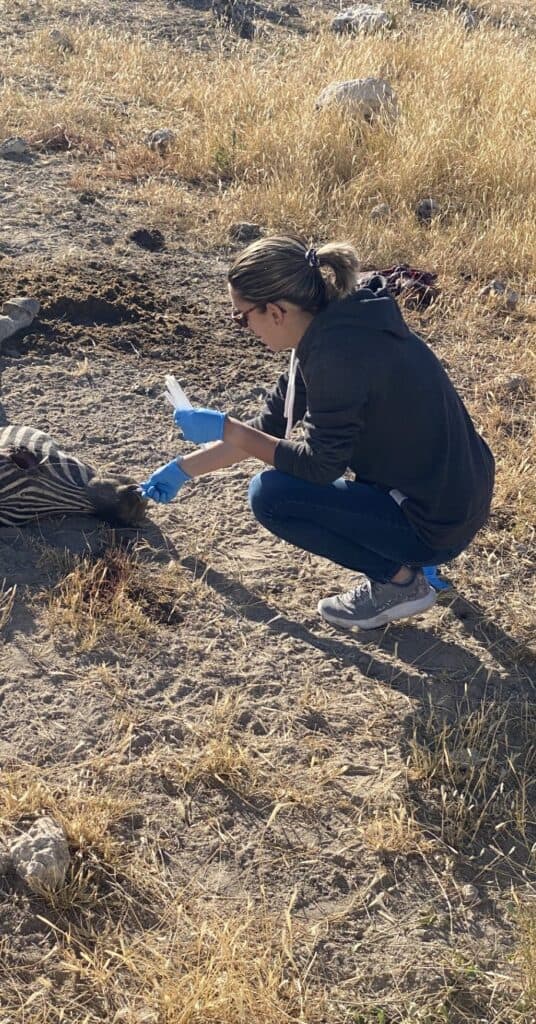
Tourists at the time reported animals dropping dead in the field, and Vera saw some of the effects of starvation up close. “I literally saw zebras eating dirt and rocks,” she said.
Historically, both species used to migrate a lot more than today. When conditions were too dry in the Etosha National Park area, many wildebeests would move northwards into Angola, which has more water. Today, the area north of the Angolan border has too much development and fencing for the animals to move.
In the 1970s and 1980s, wildlife managers dug wells in parts of Etosha in an effort to draw animals to tourist viewing areas. This water has supplemented the animals during drought.
Tracking data showed that zebras used these waterholes more than wildebeests, which spend more time on the move in search of higher-quality food than zebras do. Some wildebeests went four days between drinks.
“For wildebeest specifically we really see them pushing their limits in seeking that forage,” Vera said.
The collar data also revealed wildebeest were still trying to push as far northwards as they could, though they came up against obstacles blocking them from wetter areas in Angola. Both species still migrate as best as they can within park boundaries, though, Vera said.
Silver lining
The drought had at least one benefit, though. Typically, a number of zebras and wildebeests here die from anthrax each year, which is usually transmitted between animals during the wet season, but that didn’t happen during the drought.
“Normally there would be a ginormous peak of mortalities recorded by both zebra and wildebeests but there weren’t any recorded for those two species,” Vera said. Anthrax deaths for other antelope species were the lowest ever recorded in the area, she said.
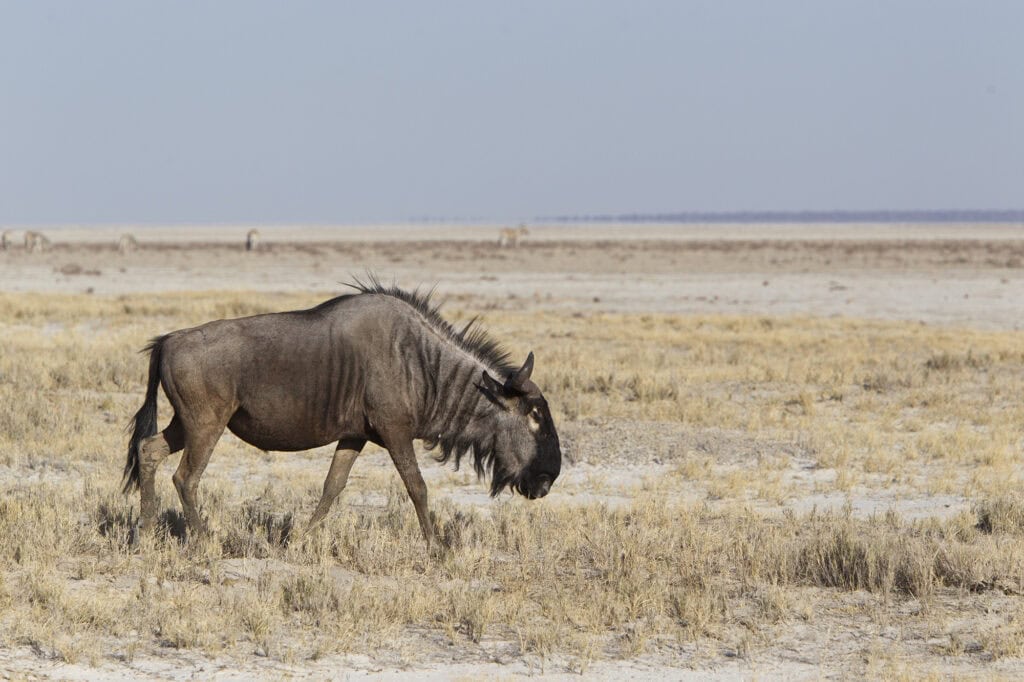
Header Image: Zebras collect around waterholes during times of drought. Credit: Kimberlie Vera



